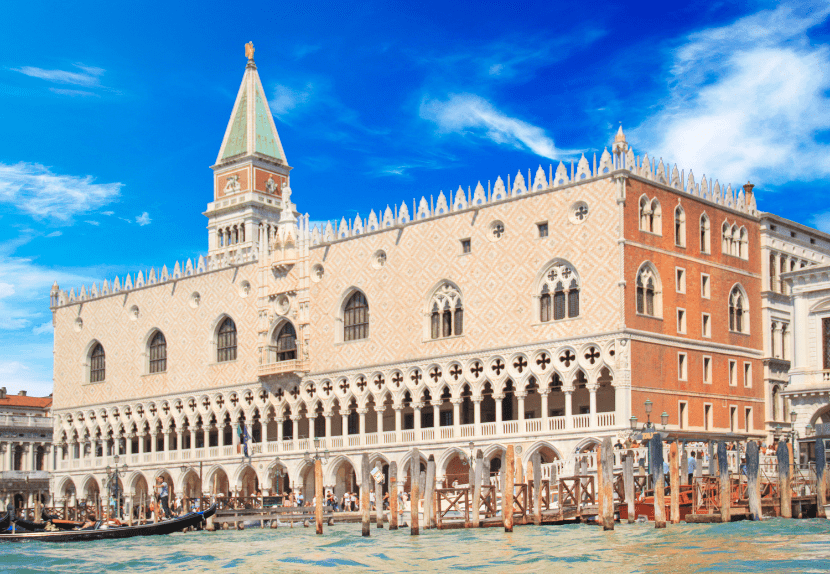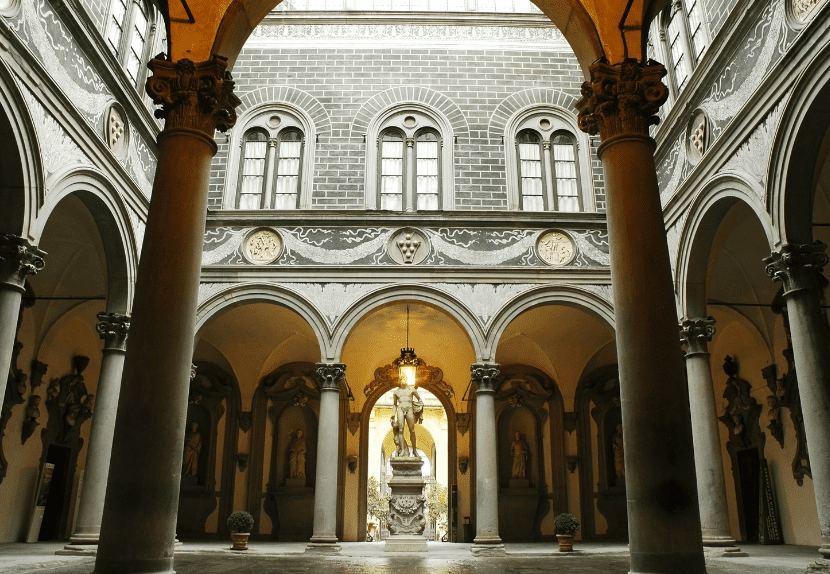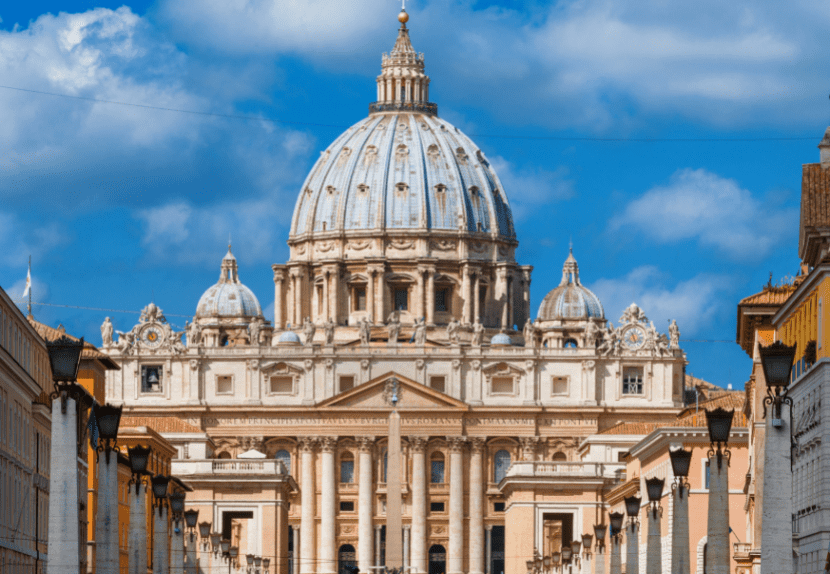No products in the cart.
EXCLUSIVE WEBINAR | “4500 Years of Sicilian Art in 45 Minutes: A Guide to Sicilian Creativity” with Dr. Gary...
November 13, 2025
1 hour
$25.00




ONLINE ART HISTORY COURSE
“Myth and History of the Renaissance City: Florence, Rome,Venice“
LIVE ART HISTORY COURSE with Dr. John Paoletti
Dates: March 8 – March 22, 2023
Schedule: Wednesdays
Time: 11:00am – 12:15pm ET | 8:00 – 9:15am PT |
4:00 – 5:15pm London
Contact Hours: 3 Hours 45 Minutes
Credits: Certificate of Completion
ONLINE ART HISTORY COURSE
“Myth and History of the Renaissance City: Florence, Rome,Venice“
Course Description:
Cities in Italy, like those of other countries, have their own specific characteristics. During the Renaissance, Italian cities quite deliberately sought distinctive artistic styles to distinguish them from their rivals. Since there was no “Italy” in the late middle ages but a contiguous group of individual city-states vying for supremacy over adjacent territories, it should not be surprising that their architecture, art, and civic identities were elaborated to distinguish them from rival neighbors and to identify them as specific urban entities within the larger spaces of what we now know as Italy. We will consider three of the most prominent of these urban spaces – Rome, Florence, and Venice – and discuss how their understanding of themselves – and themselves as distinct from others – was broadcast visually through their art and architecture.
Virtual Classroom: Full access to an online educational platform with discussion forum, videos of recordings, syllabus, and readings.
Credits: Certificate of Completion
Location: LIVE INTERACTIVE ON-LINE ART HISTORY LECTURES
Optional Readings:
Readings to be provided to students in PDF format prior to the beginning of course.
Complete syllabus will be provided upon registration.
– LECTURE 1 – Wednesday, March 8: FLORENCE
Florence was the first Italian city consciously to seek out ancient Roman sculpture and architecture as models for its own art. Prompted by the new interest in classical Roman texts, an awareness of its own history as having been founded as Roman military camp and the political needs of the city at the beginning of the fifteenth century, Florentine artists sought a visual language that would complement this expanding understanding of the city’s Roman past. But the very nature of this antique awareness itself changed by the end of the century to meet the needs of an increasingly autocratic culture dominated by the Medici family, ultimately leading to an art that spoke more to an educated citizenry rather than to the much more numerous underclasses.
– LECTURE 2 – Wednesday, March 15: ROME
When the papacy returned to Rome in 1420 after an exile in Avignon because of schism that had begun in 1378, Pope Martin V began the task of restoring the city so that it would indicate the power of the restored papacy to govern not only the Church but also the political territory of the Papal States. The visual arts played an ever expanding and vital role in which the style of ancient Roman connoted not a single overarching political state but a single universal Church so convincingly developed in the work of Bramante, Raphael and Michelangelo.
– LECTURE 3 – Wednesday, March 22: VENICE
Venice is distinct from Florence and Rome, most notably because it had no history attaching it to ancient Rome. Built on bogs that did not provide a solid foundation for large urban structures, it did not even begin to emerge as an inhabitable city until the middle ages when the small islands began to silt up giving the inhabitants more and more solid land for structuring a city. As a growing maritime power, Venice turned eastward towards Constantinople that had developed its own visual vocabulary in the sixth century under the Emperor Justinian and after the decline of Rome as a dominating power. One dominating aspect of Venetian art was the development of oil painting that allowed the shimmering quality of light reflected from the city’s waterways to be incorporated in the textured surfaces of paintings thus giving them an increased liveliness as viewers moved before them, changing the refracted light.
John Paoletti received his Ph.D in art history from Yale University. He taught the history of Italian Renaissance art and of the art of the twentieth century at Wesleyan University from 1972 to 2009, having previously taught at Bryn Mawr College and Dartmouth College. He was a William R. Kenan Professor of the Humanities at Wesleyan from 2005 until his retirement. He received the Binswanger Prize for Excellence in Teaching at Wesleyan in 1997 and the Distinguished Teaching of Art History Award from the College Art Association in 2003. He was a Fellow at the School of Historical Studies, Institute of Advanced Study, Princeton in the spring of 2001 and Visiting Professor at the Villa I Tatti, Harvard’s Center for Renaissance Studies in Florence, in the late fall of 2008. He is currently serving as a member of the Committee on Prints and Drawings at the Museum of Modern Art, New York. From 1996-2000 he was the editor-in-chief of The Art Bulletin, the journal of record in art history in the United States. He served as guest curator for exhibitions at the Wadsworth Atheneum and the Yale Center for British Art, as well as at Wesleyan. He lectured on a number of occasions at the Metropolitan Museum and for the Friends of Florence. He is also a lecturer for Smithsonian tours.
His book, Michelangelo’s David: Florentine History and Civic Identity, was published in 2015; it uses the popular culture and civic history of Florence to open new ways of interpreting the David. He is the co-author with Gary Radke of Art in Renaissance Italy, now in its fourth edition. With Roger Crum he is the co-editor of and contributing author to Renaissance Florence: a Social History, (New York, 2006). He has contributed catalogue essays for exhibitions at the Walker Art Center, the National Gallery of Art and the Nürnberg Kunsthalle. He has contributed articles on Italian sculpture and Medici patronage to a number of essay collections and festschriften, and to The Art Bulletin, the Jahrbuch der Berliner Museen, Artibus et Historiae, Pantheon, and Renaissance Quarterly. He is currently at work on Medici patronage during the fifteenth century and on a monograph on the contemporary German artist Georg Baselitz.